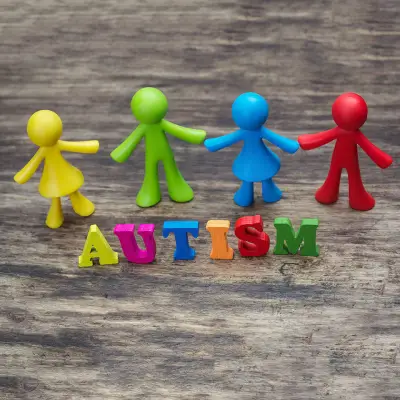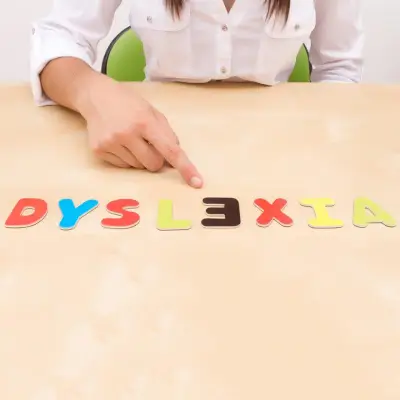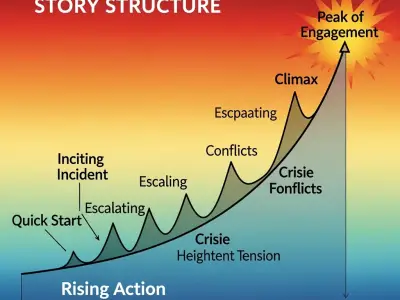If you’ve ever wondered why emotions can sometimes feel too big or difficult to manage, especially for someone with ADHD or autism, it’s a question many people find themselves asking. Perhaps you’ve experienced sudden emotional outbursts that seem to come out of nowhere, or watched a loved one spiral from calm to overwhelmed in a matter of moments. This emotional intensity isn’t a sign of immaturity or lack of self-control; it’s something known as emotional dysregulation. And once you begin to understand it, things can start to make a lot more sense.
Let’s explore what emotional dysregulation really means, how it shows up in ADHD and autism, and what can help.
Jump to:
- Why Emotions Feel So Intense for Some People
- What Does Emotional Dysregulation Look Like?
- Emotional Dysregulation in ADHD
- Emotional Dysregulation in Autism
- Why Emotional Dysregulation Happens
- Common Triggers That Can Set Emotions Off
- How to Tell If You or Someone Else Is Emotionally Dysregulated
- What ADHD Emotional Dysregulation Looks Like in Real Life
- Is Emotional Dysregulation a Disorder?
- Can Emotional Dysregulation Be Treated?
- Helping Someone with Emotional Dysregulation
- Study ADHD Awareness for £29
Recommended for you!
Best SellersWhy Emotions Feel So Intense for Some People
Emotion dysregulation is a term used to describe difficulty managing emotional responses. These responses might feel bigger, more sudden, or longer-lasting than expected. It can be confusing, even frightening, to feel overwhelmed by sadness, anger, frustration or joy, and not know how to rein it in.
This isn’t simply being "too sensitive" or "dramatic." Emotional dysregulation affects how someone experiences the world emotionally, and it’s very common in people with ADHD and autism.
What Does Emotional Dysregulation Look Like?

Emotional dysregulation can be hard to spot at first, especially when emotional reactions are dismissed as moodiness or overreacting. But emotional dysregulation has some clear signs, including:
- Strong emotional reactions that seem out of proportion
- Difficulty calming down after being upset
- Feeling easily overwhelmed by daily stressors
- Crying suddenly or often without knowing why
- Going from calm to distressed in a matter of seconds
If any of that sounds familiar, you’re not imagining it. These reactions can be exhausting, both to experience and to witness, and they often come from a neurological root, not a behavioural one.
Emotional Dysregulation in ADHD
When people think of ADHD, they often picture distraction or hyperactivity. But there’s another side to ADHD that’s less discussed: emotional dysregulation. Many adults with ADHD describe:
- Intense emotions that build quickly and feel difficult to stop
- Emotional outbursts in situations that don’t seem especially upsetting
- A tendency to cry easily, especially during frustration
- Sudden feelings of anger or panic
- Difficulty “letting go” of a mood once it sets in
These are all examples of ADHD emotional symptoms, and they can be deeply distressing. ADHD impacts the brain’s executive functions, the part that helps you regulate impulses and emotions. So when you’re feeling something strongly, the ADHD brain often struggles to pause and reflect before reacting.
This explains why ADHD and emotional dysregulation are so often linked, especially in adults who’ve spent years masking or managing symptoms in high-pressure environments.
Emotional Dysregulation in Autism

In autism, the experience of emotion can be just as powerful, but for different reasons. Emotional dysregulation in autism is often tied to sensory overload, unexpected changes, or social misunderstanding. For autistic adults, emotional dysregulation might look like:
- Becoming overwhelmed in noisy, bright, or crowded spaces
- Meltdowns or shutdowns triggered by unexpected events
- Difficulty identifying and expressing emotions (alexithymia)
- A sense of emotional "flooding" from minor stressors
These responses aren’t manipulative or avoidant. They’re protective. Autistic people often feel emotions deeply and may find it harder to express them in ways others expect. The world can feel unpredictable and overstimulating, which puts enormous stress on emotional regulation systems.
This is why regulating emotions in autism often requires supportive environments, clear communication, and sensory-aware practices.
Why Emotional Dysregulation Happens
In both ADHD and autism, the root cause of emotional dysregulation involves differences in how the brain processes emotions and responds to stress.
For ADHD, the issue lies in impulse control, frustration tolerance, and working memory. These functions help us regulate how we react emotionally, and when they’re disrupted, emotions can take over quickly.
In autism, the causes are often sensory-related or linked to difficulties processing internal and external stimuli. If someone’s environment is overwhelming, their emotional capacity can become overloaded fast.
Sometimes, emotional dysregulation is also shaped by past experiences. Trauma can cause emotional dysregulation by training the brain to stay in a heightened state of alert. The emotional system becomes more reactive, leading to quicker and more extreme responses.
Common Triggers That Can Set Emotions Off

Understanding what sets off emotional dysregulation can help prevent future episodes or manage them more gently. Common triggers include:
- Sensory input (loud noises, bright lights, busy spaces)
- Sudden changes in plans or unexpected demands
- Criticism or rejection (real or perceived)
- Feeling misunderstood or unheard
- Physical needs—hunger, fatigue, illness
- Internal stress and self-pressure
The more aware someone is of their emotional triggers, the better they can prepare for or avoid them when possible.
How to Tell If You or Someone Else Is Emotionally Dysregulated
Emotional dysregulation can affect daily life in ways that aren’t always obvious at first. These signs can help you recognise when emotions are becoming difficult to manage.
- You often feel overwhelmed by small problems: Minor setbacks, like being late, forgetting something, or changes in routine, can feel incredibly stressful. Your nervous system reacts as if it’s dealing with something much bigger, which can be exhausting.
- You react with strong emotion and find it hard to calm down: Emotions may come on quickly and intensely, and once triggered, it can be difficult to settle. Even after the situation has passed, the emotional response lingers longer than expected.
- You feel drained or guilty after emotional outbursts: Once the intensity fades, it’s common to feel wiped out or ashamed. You might replay what happened, wondering why your reaction felt so out of proportion.
- You struggle to explain why you’re upset: You know something feels wrong, but putting it into words is difficult. This can lead to further frustration, especially if others expect you to explain your feelings straight away.
- You avoid situations that might lead to emotional overload: Whether it’s a noisy place, a challenging task, or certain social settings, you might avoid things that have overwhelmed you before, just to prevent the emotional fallout.
These signs suggest your brain may be handling emotions in a more reactive way than others. With the right support and strategies, emotional regulation can become easier to manage over time.
What ADHD Emotional Dysregulation Looks Like in Real Life

In daily life, emotional dysregulation in ADHD might mean snapping at a loved one over a minor mistake, breaking down in tears during traffic, or feeling euphoric about a new idea only to crash an hour later.
It might mean avoiding conflict entirely for fear of overreacting. Or feeling intense shame after a disagreement because your response felt too big. These are not signs of weakness; they’re signs of a brain trying its best to keep up with emotion and falling short through no fault of its own.
Is Emotional Dysregulation a Disorder?
Emotional dysregulation isn’t a diagnosis on its own. Instead, it’s a shared experience across many neurodivergent and mental health profiles. It doesn’t define a person; it describes a challenge they face.
Can Emotional Dysregulation Be Treated?
You might wonder if emotional dysregulation can go away. While it may not disappear completely, it absolutely can improve. Support options include:
- Therapy (CBT, DBT, and trauma-informed approaches)
- ADHD or anxiety medication (depending on the cause)
- Emotional regulation tools (like mindfulness, journaling, or grounding exercises)
- Creating calm, predictable environments
- Support groups and coaching for neurodivergent people
There’s no one-size-fits-all approach, but there are many ways to reduce the intensity and impact of dysregulated emotions. Over time, people often learn to identify triggers, name their emotions, and use strategies to stay balanced.
Recommended for you!
Best SellersHelping Someone with Emotional Dysregulation
Supporting someone who struggles with emotional regulation can make a real difference in how safe, seen and understood they feel. Your approach doesn’t need to be perfect; it just needs to be patient, compassionate, and consistent.
- Listen without judgement: Let them express how they’re feeling without correcting, analysing or dismissing. Feeling heard can help reduce the intensity of their emotions.
- Avoid telling them to “calm down” or “get over it”: Even if well-meaning, these phrases can feel invalidating. They may already feel out of control, and being told to stop only adds pressure.
- Offer quiet support without forcing conversation: Sometimes, the best thing you can do is simply be there. A calm presence, even in silence, can be grounding during emotional overwhelm.
- Learn their triggers and how to help them self-soothe: Understanding what tends to set them off and what helps them recover can prevent escalations and make your support more effective.
- Encourage small breaks before overwhelm builds: Suggest stepping away or taking a breather before emotions reach boiling point. Regular check-ins or quiet pauses can help keep things manageable.
Study ADHD and Autism Awareness for £29
Understanding why emotions feel so intense in ADHD and autism can remove shame, build compassion, and lead to meaningful change. If you’d like to explore these topics further, the ADHD Awareness Diploma Course from Centre of Excellence offers expert insight into ADHD’s emotional side, along with practical tools to support better self-understanding and regulation. You can also learn more about emotional regulation and neurodiversity through the Autism Awareness Diploma Course. Enrol in any of these courses today for a discounted price of £29!












